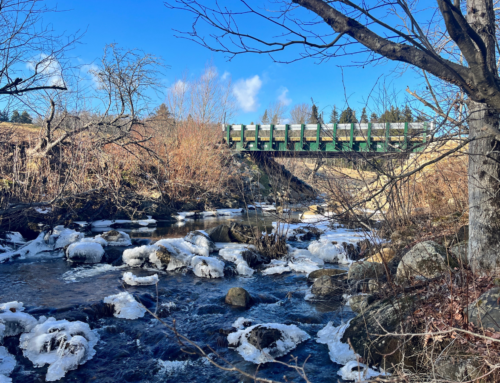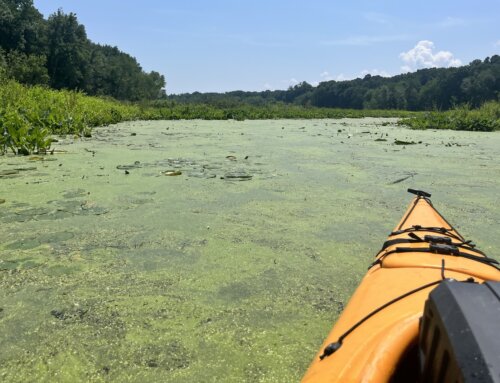Vermont. March 29, 2010 .
When you first see the picture you would think the editor had made a mistake and placed the picture on its side. On reading the caption though the striped bass in the picture is in fact “standing on its tail” with its nose facing straight up in a comatose state. The fish was under the effects of an endocrine treatment medicine added to the water.
We now face new types of pollutants known as endocrine disrupters and they are found in profusion in certain watersheds in the US. It is unknown at this time if we face the problem in the Connecticut River. It is not a matter of whether these compounds are present or not but VT, NH and the federal government have yet to publish the results of any studies so we are ignorant of the presence or lack thereof of drugs in our river.
What are endocrine disrupters? The endocrine system inside our bodies is the network of glands, hormones and receptors that provide communication and controls between the nervous system and bodily functions such as reproduction, immunity, metabolism and behavior. The endocrine system is based on chemicals, the hormones, which are secreted into the blood and reach all parts of the body. What is true for us is true for all animals on earth including our aquatic neighbors. Endocrine disrupting chemicals mimic the natural hormones in the body. These chemicals are used in thousands of common products. Some closely related drugs react differently to standard wastewater treatment and some do not react at all. Mirror image drugs have the same effects in humans but different reactions to treatment in wastewater processes.
Endocrine disruptors can be natural or synthetic. Some plants, including soybeans and garlic, produce endocrine disruptors as a defense mechanism. However, most endocrine disruptors are human-made chemicals, such as pharmaceuticals, phthalates (used as plasticisers), alkylphenols (industrial detergents), and bisphenol A (used in packaging food), that are released into the environment unintentionally. They have been shown to cause developmental and reproductive abnormalities in wildlife, and can cause birth defects, breast cancer, prostate cancer, and infertility in humans. For the most part our wastewater treatment plants were engineered and built beginning in the 1950s. The technology used in those plants was and is pegged to deal with the pollutants of the time. Things have changed from those earlier times and our technology is falling behind in dealing with modern pollutants. In the meantime things could slip out of control if there is no response on the part of our policy makers. We may face situations where there are no male fish of certain species and five legged frogs as normal occurrences.
Disrupters play a role in the feminization of male fish that has been reported from many countries across the world. The effects reported are probably a consequence of exposure to a mixture of estrogenic chemicals.
Along with endocrine disrupters we are also looking at another new technology being dumped onto our waters called nano particles, molecules less than one thousandth the width of a human hair. Nano particles are extremely small particles, sometimes only one cell thick that are used in a wide variety of products and the number is growing.
Several studies have shown there are health risks posed by nano particles. Manufacturers are putting these particles into skincare products. Even worse, the FDA is allowing them to do so without adequate testing of the new technology or its consequences for human health in direct application situations and nobody is looking to see their effects in our rivers and lakes.
So how do all of these new pollutants find their way into our river? They simply are flushed into the waste water system either by natural elimination by people or having households throw out old prescriptions and personal care products by flushing them down the sink or toilet. From there they make their way to the wastewater treatment facilities where the facilities cannot treat the compounds or nano particles.
Unused drugs then become part of the effluent from the plant but are not treated by the process within the plant. They should be screened out but the most reliable system is reverse osmosis but that is expensive to install and maintain and is not used on our plants. So we are left with digestion as the system of disposal and that is not 100 percent reliable or effective in dealing with these new pollutants.
What can you do? If you are hooked up to a municipal waste water system do not flush unused drugs down the toilet or sink in your house. Mix them with mud, used cat litter or some other disgusting substance and then throw them in the trash or take them to your recycle centers hazardous waste collection day. Since manufacturers’ should be responsibility for the drugs they produce, ask your pharmacy to take back unused drugs. Take unused personal care products to your toxic collection days at your recycle center.
# # # #
David Deen is River Steward for the Connecticut River Watershed Council. CRC has been a protector of the Connecticut River for more than half a century.







